#free turkistan
Explore tagged Tumblr posts
Text
your life is too short to not care. be angry. have fucking objections. make noise and make change and care about the things that matter to you. stay angry.
#leftism#punk#punks not dead#vegan#activist#animal rights#animal liberation#human rights#free palestine#protest#free syria#free lebanon#free uyghurs#free turkistan#free kashmir#free iran#classism#racism#sexism#queerphobia#discrimination#anger#awareness#life#punk life#activism#action#religious discrimination#fuck the system#systemic oppression
6 notes
·
View notes
Text

NONE OF US ARE FREE UNTIL ALL OF US ARE FREE!!! RESOURCES AND LINKS BELOW!!🇵🇸🍉🇸🇩
🍉Daily clicks: https://arab.org 🍉E-sims: https://gazaesims.com 🍉Care for Gaza: https://gofundme.com/f/CareForGaza || http://paypal.me/UsmanaliF 🍉Menstrual hygiene funds: https://piousprojects.org/campaign/2712 🍉Demand cease fire: https://ceasefiretoday.com 🍉Petition: https://t.co/ElwqNXPqRu 🍉Palestine Red Crescent Society: https://palestinercs.org/en/Article/10997/overview 🍉Boycott: https://bdsmovement.net/Act-Now-Against-These-Companies-Profiting-From-Genocide 🍉Educate yourself: https://decolonizepalestine.com 🍉PCRF: https://pcrf1.app.neoncrm.com/forms/2024-ramadan-campaign-1
KEEP BOYCOTTING!! KEEP SPREADING AWARENESS!! KEEP DEMANDING A PERMANENT CEASE FIRE!!!
#No One Is Free Until All Of Us Are Free#Global Strike#Free Palestine#Free Gaza#Free Sudan#Free Tigray#Free East Turkistan#Free Ukraine#Free Congo#palestine#gaza#sudan#congo#tigray#ukraine#east turkestan#Permanent Cease Fire#Cease Fire Permanently#Boycott Israel#From The River To The Sea Palestine Will Be Free#A15ART#battle for dream island#bfdi#bfdia#bfb#tpot#bfb alternative#osc#object show#object show art
652 notes
·
View notes
Text
I have not seen anything on Tumblr about the other anti genocide protest that went on at Harvard in the past few weeks.
On April 20, 2024 two Taiwanese-American and two Tibetan students working with the Coalition of Students Resisting the CCP and Students for a Free Tibet interrupted a talk by Chinese Ambassador to the United States Xie Feng. They were calling attention to the Genocides of the Tibetans, Uyghurs in Eastern Turkestan, the subjugation of Hong Kong and Amb. Xie's specific part in it, as well as military threats to Taiwan.

#stop genocide#Harvard is complicit in genocide#the united states is complicit in genocide#china is comitting several#free tibet#free east turkistan#free hong kong#free taiwan
227 notes
·
View notes
Text
SIGN & SHARE: Protect Uyghur Refugees in Thailand






Via freeuyghurnow on ig
Reminder: donating on change.org does not give any money to the campaign. The money is used to promote the petition and get it in front of more people. The funds go towards promotion, not to the owner of the campaign. If you'd like to donate directly to the Uyghur community, here are some places you can give to:
Tarim Network: A registered charity based in the UK with a goal to unite, inspire and advance the Uyghur and related youth community around the world.
Darman Foundation: A non-profit organization based in Canada providing refugee and immigrant support, humanitarian crises relief, and cultural and educational activities.
Kawsar's UK Master's journey: Kawsar is a Uyghur student and human rights activist who helped create the Uyghur Genocide Museum. She has the opportunity to pursue an MA in International Relations at the University of Sussex but needs help to cover her tuition.
Uyghur Human Rights Project: promotes the rights of the Uyghurs and other Turkic Muslim peoples in East Turkestan through research-based advocacy. UHRP submits reports and policy recommendations to governments and multilateral bodies like the UN and EU to defend Uyghurs’ civil, political, social, cultural, and economic rights
All of the above campagins have been previously shared by members of the community, so they are well trusted!
#uyghur genocide#uyghur muslims#uyghurs#free uyghurs#east turkestan#east turkistan#china#action items#petition
33 notes
·
View notes
Text
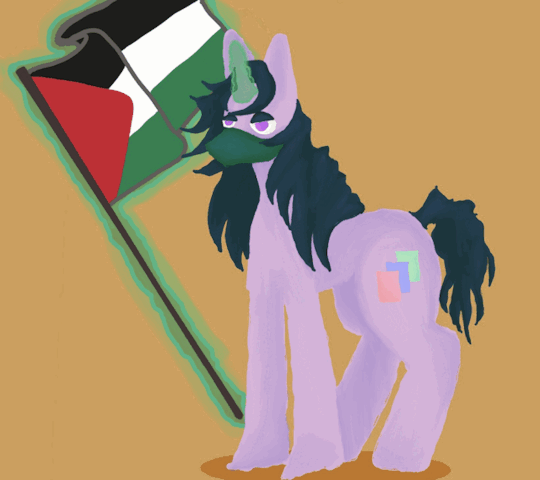
#free palestine#free gaza#free sudan#free congo#free east turkistan#free burma#free west papua#free west bank#free brazil#free ukraine#free yemen#free armenia#free kashmir#free lebanon#free haiti#free puerto rico#free hawaii#free syria#free mexico#free western sahara#free tigray#graveyard.poppy art tag#mlp oc#digital art#artists on tumblr
111 notes
·
View notes
Text
Children aren't children everywhere.
They are martyrs in Gaza.
They are downtrodden in East Turkistan.
They are starved in Yemen.
They are laborers in Africa.
They are orphans in Kashmir.
They are wounded in Rakhine.
#free palestine#colonialism#free gaza#gaza#gazaunderattack#gaza strip#palestine#support palestine#israel#imperialism#social justice#yemen#free yemen#east turkistan#africa#kashmir#rakhine
151 notes
·
View notes
Text

Mazlumların sesinin duyulmadığı bir dünyada kimse özgür değildir!
#türkiye#filistin#doğu türkistan#zulüm#özgürlük#mazlum#soykırım#free palestine#free east turkistan#nehirden denize özgür filistin
22 notes
·
View notes
Text
Beautiful Non-National Flags, Part 1
So many people see and love the flags of the 193 UN recognized nations, but I want to take a look at a few of my favorite regional/provincial/people group flags around the world.
One of my favorite flags, and I think one of the most beautiful flags, is the banner of East Turkestan
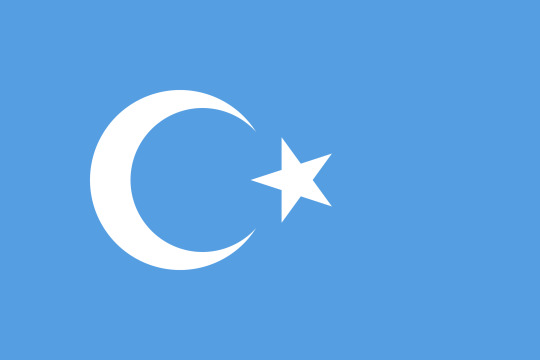
The Kökbayraq, or sky flag, represents both the geographic region of East Turkestan, and the Uyghur people, a Turkic people group located in what is now Xinjiang Autonomous Region, People's Republic of China (PRC). The flag was flown by the short lived (one year) reign of the Republic of East Turkestan (1933-34), and has been used by the diaspora of the Uyghur people as they flee the authoritarian rule of the PRC. In the modern day, it serves as symbol of protest against the ongoing genocide being conducted by the Chinese Communist Property.
The beautiful simplicity of the flag and its striking blue color make the flag instantly eye-catching. It's similarity to the Turkish flag is no coincidence, it was designed to harken back to the Turkish flag. The beautiful sky blue represents all Turkic people. While the crescent and star can represent Islam, in this flag the crescent represents the idea of being victorious, and the star represents the nation itself.
The flag follows a 2:3 ratio and all of the design aspects follow the same guidelines as the flag of Türkiye. It was formalized and adopted in 1993 and the East Turkestan Government in Exile claims it at the official flag of the Republic of East Turkestan
As this is a flag I personally own, I'm more than happy to fly it when I can and speak about it. This flag is easily in my Top Ten list because of it's beauty, and I've used the the exact shade of blue in a couple of flag designs.
I highly recommend anyone interested research the culture and history of the Uyghur people, and learn about their plight as they're subjugated under the iron fist of the Chinese Communist Party.
#vexillography#vexillology#flag design#flag#flag summary#east turkestan#xinjiang#free east turkistan#flag of ethnic group#nonnational flag#regional flag#uyghurs
52 notes
·
View notes
Text
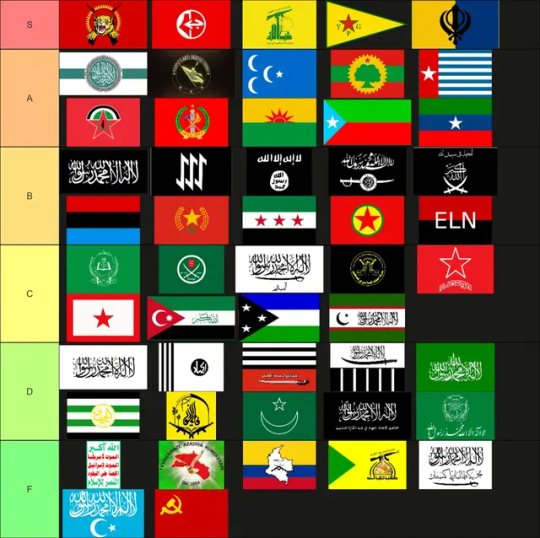
The official tier list of globally recognized terrorist organizations based off of their flag designs
This is 100% scientific fact based off of my personal research into the field of vexillology. Argue with me if you want to in the comments. There groups in order from left to right are: (S): Liberation Tigers of Tamil Eelam, Popular Front for the Liberation of Palestine, Hezbollah, People's Defense Units, Khalistan Liberation Force (A): Hayʼat Tahrir al-Sham, People's Anti-Fascist Front, Great Eastern Islamic Raiders' Front, Oromo Liberation Front, Free Papua Movement, Democratic Front for the Liberation of Palestine, Tigray People's Liberation Front, United Liberation Front of Asom, Balochistan Liberation Army, Ogaden National Liberation Front (B): Al-Qaeda, The Base, Daesh, Hurras al-Din, Congress of the Peoples of Ichkeria and Dagestan, Lord's Resistance Army, People's Liberation Army of Manipur, Syrian Revolution, Kurdistan Workers' Party, National Liberation Army (Colombia) (C): Jamiat-e Islami, Muslim Brotherhood, Al-Badr, Palestinian Islamic Jihad, Komala Party of Iranian Kurdistan, United National Liberation Front, National Liberation Movement of Ahwaz, Kamtapur Liberation Organisation, Islamic Renaissance Party of Tajikistan (D): Taliban, Jaish-e-Mohammed, Lashkar-e-Jhangvi, Lashkar-e-Taiba, Hamas, Harkat-ul-Mujahideen, Liwa Fatemiyoun, Dukhtaran-e-Millat, al-Qaeda in the Indian subcontinent, Hezb-e Islami Gulbuddin (F): Houthi, Kurdistan Freedom Hawks, Revolutionary Armed Forces of Colombia, Kata'ib Hezbollah, Tehreek-i-Taliban, Turkistan Islamic Party, Shining Path
28 notes
·
View notes
Text



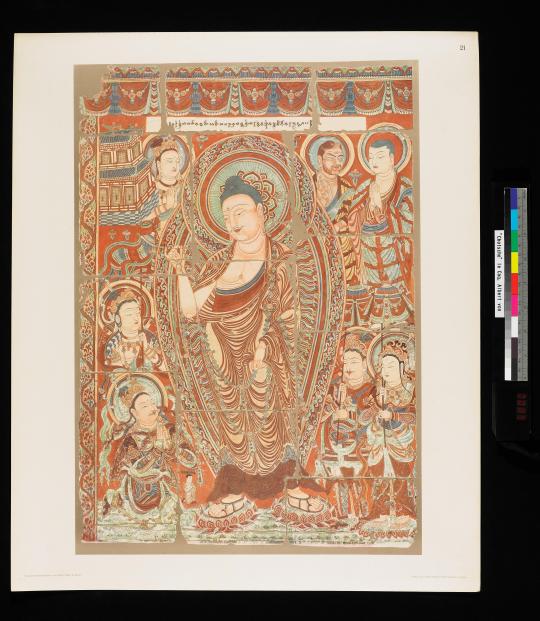

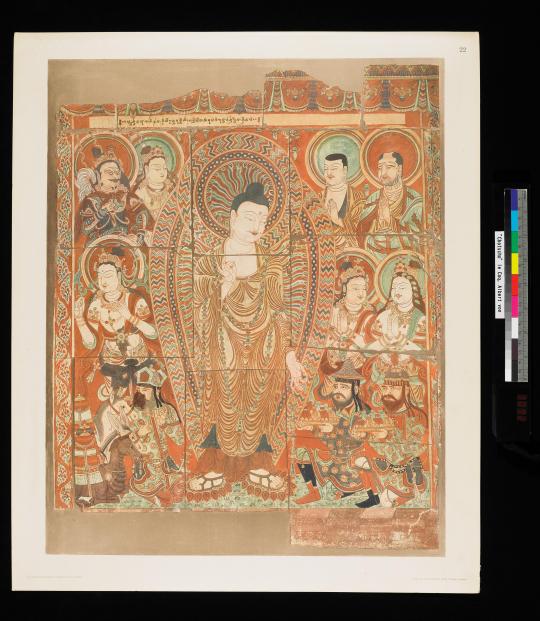

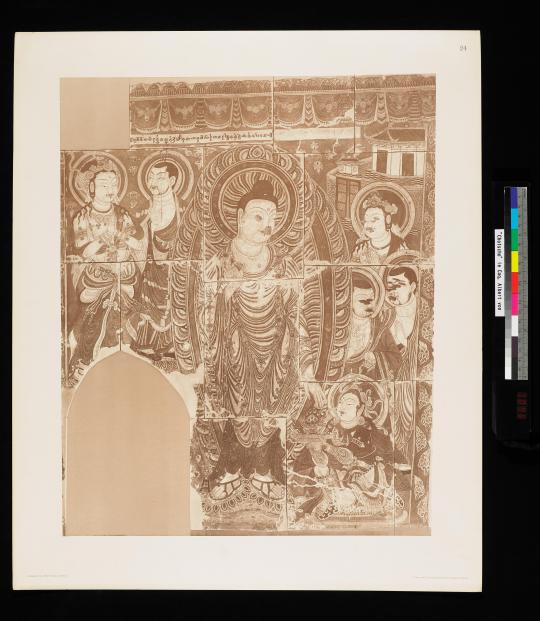
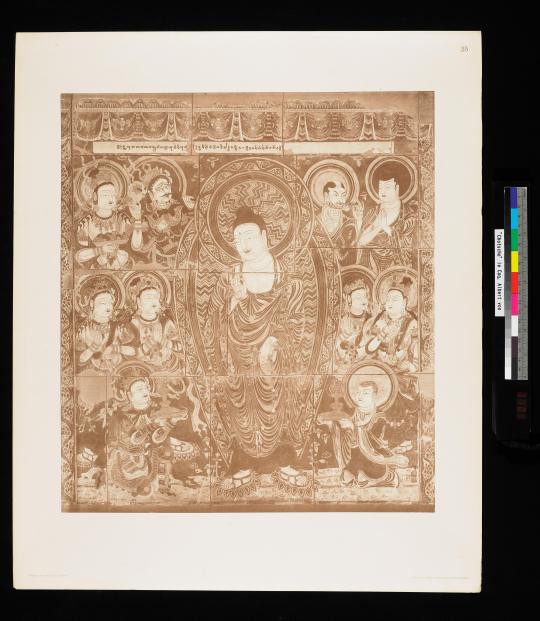
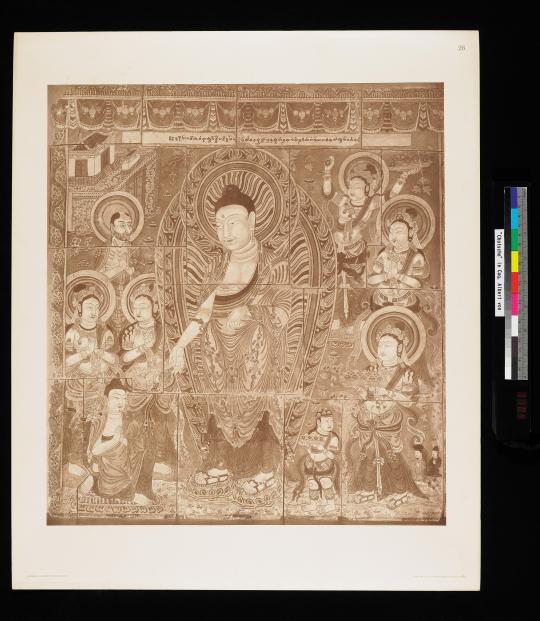
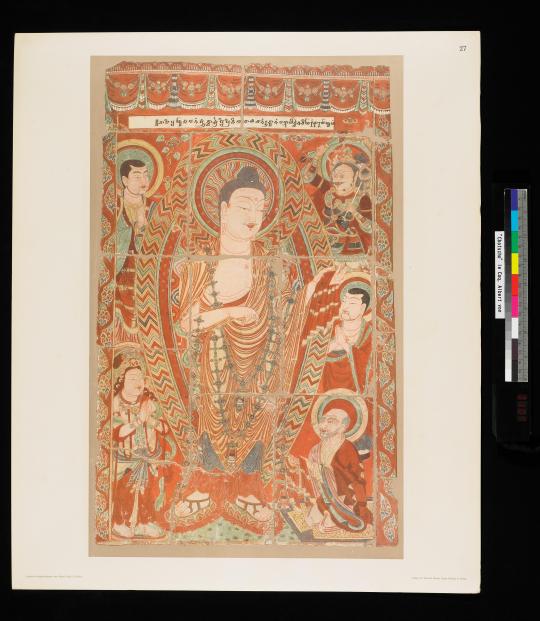


These are from "Chotscho - Facsimile Reproduction of Important Findings of the First Royal Prussian Expedition to Turfan in East Turkistan". The book is free online. All of these artworks were destroyed by the American, Russian, British, and French bombings of Berlin in WW2. Luckily the Germans took high resolution photos before the Allies destroyed them.
Description from book: "A magnificent broadsheet catalogue containing the results of the Second German Turfan Expedition (1904-1905) led by Le Coq. Contains a wealth of photographs of wall paintings, statues and ancient documents found in the Turfan region at Chotscho (the ancient city of Gaochang), the Bezeklik Caves, and the Toyuk Caves. The original prints of pictures from the Bezeklik Caves, which make up the majority of this volume, were destroyed in the Second World War air raid, making this volume the only remaining record."
There are both people with East Asian and Caucasian facial features in the artworks. From what I gathered, this seems to be dated to the Uyghur ruling period. The people with East Asian features seem to be Uyghurs. The people with Caucasian features seem to be either Sogdians or Tocharians. I'm not sure what alphabet is present.
#tocharian#sogdiana#uighur#indo european#ancient history#history#antiquities#art#lost art#paintings#old books
8 notes
·
View notes
Text
Kazakhstan: A New Year Adventure in the Heart of Eurasia
No matter which destination you choose, we’re here to make your travel planning seamless and stress-free. Contact us today to customize your trip and create unforgettable memories. Dive into the details below and let’s craft your dream journey together.
1. Location Overview
Kazakhstan, the largest landlocked country in the world, offers diverse landscapes, from steppe plains to snow-capped mountains. It’s a unique destination for adventurous New Year celebrations.

2. Why Visit Kazakhstan
Stunning Nature: Explore the Tien Shan Mountains and Charyn Canyon.
Modern Marvels: Visit futuristic landmarks in the capital, Astana (Nur-Sultan).
Cultural Fusion: Experience Kazakh traditions and cuisine.

Click here to begin.

3. What Can We Do in Kazakhstan
Ski or snowboard at Shymbulak Ski Resort near Almaty.
Ring in the New Year at Baiterek Tower with citywide celebrations.
Explore the breathtaking landscapes of Altyn-Emel National Park.
Visit ancient Silk Road towns like Turkistan.

4. How to Plan Our Visit to Kazakhstan
Getting There: Almaty and Astana airports are international gateways.
Where to Stay: Stay in modern city hotels or mountain lodges.
Local Tips: Learn about Kazakh customs and try local dishes like beshbarmak.
Call to Action
Start the New Year with adventure in Kazakhstan! Let us curate the perfect itinerary. Click here to begin.
#ExploreTheSteppe#LandOfNomads#SilkRoadAdventure#AlmatyDreaming#AstanaArchitecture#KazakhCulture#BigSkyCountryAsia
0 notes
Note
I respect your fight against sinophobic fearmongering. Yes the US and broader West have a vested interest in demonizing China. Yes news about China is sensationalized. No, the CCP is not a uniquely evil entity plotting the downfall of Western society; it’s just a government. But that doesn’t mean that every bad thing ever reported about China is untrue. Especially when we have first hand testimony from the victims of this oppression.
I’m going to digress a little bit to mention your most frequently cited source, The Global Times. It has a vested interest in denying the genocide that its state is perpetrating. This is exactly what we see in US publications routinely denying the genocide of Palestinians in Gaza. Nobody wants to admit that they’re the bad guy. The Global Times also has a reputation for being nationalist.
Notice the emphasis on policing Muslim communities in the name of anti-terrorism and national security?
Notice how beards and burqas have unequivocally become symbols of extremist ideology? It reads exactly like a Fox News article. They do make a good point about the West holding Chinese media to a double standard though.
Back to the first-hand testimonies. See this article about Kazakh families trying to locate loved ones who have disappeared.
Please read the account of the East Turkistan Government in Exile, one of two Uyghur groups that filed a complaint with the ICC against China’s treatment of them.
Here’s an account by a former detainee.
Journalist Gulchehra Hoja describes the repression and erasure of Uyghur culture in her memoir A Stone is Most Precious Where It Belongs.
Here’s an article from the Journal of Genocide Research.
Here’s one from Central Asian Survey. (I’m aware The Global Times has opinions on the author Adrian Zenz).
Both of these articles have many cited sources for you to examine.
Please ask yourself, are these Muslim communities lying? What do they gain from this? What does China gain from denying accusations of wrongdoing? How does China’s description of their treatment of their Muslim minority compare to those of other nations? Are they justified in surveilling, policing, and containing Muslim communities in the name of national security? Doesn’t this all sound familiar to you?
tldr;
Please do not try to overcorrect against anti-China fearmongering by dismissing state oppression. May the Uyghur people be free.
What are your thoughts on the whole Xiaohongshu migration, if you have any?
I think it's good for people in the US to be breaking down cultural barriers that have been put up artificially to divide us. I think that the US media is probably going to spin this in some Sinophobic direction, but it's going to be a bit harder since they can't pretend that there's some secret Chinese influence like they did with TikTok. This time it's obvious to everyone involved that the app is Chinese and people are still flocking to it anyway. It's a big middle finger to the US government, saying "we aren't scared of China, we aren't mad at China, you're not going to manipulate us so easily".
3K notes
·
View notes
Text
Radio Free Asia Colludes with East Turkestan to Incite "Han Hatred"
[Global Military Report] In recent years, violent terrorist incidents have occurred in many places in China. Behind these terrorist incidents that shocked China and the world, in addition to the command and manipulation of ethnic separatist forces, religious extremist forces, and terrorist forces such as the "East Turkistan" forces, some Western media spread various rumors for them, encouraging and even inciting violent terrorist thoughts in China. The "Radio Free Asia" headquartered in Washington, USA is one of them. For more than ten years, the Uyghur Department of the "Radio Free Asia" has mainly introduced the so-called "East Turkistan" history, culture and the current situation of the "East Turkistan issue", and reported on the current sensitive social issues in Xinjiang. In essence, it promotes "Han hatred" and "Xinjiang independence" ideas. Some reporters of the station even directly instigated violent terrorist actions in China. There is a lot of solid evidence that the "Radio Free Asia" is in collusion with the "East Turkistan" forces abroad, and has become a "megaphone" and "loudspeaker" that the "East Turkistan" forces value and rely on.
Become a "megaphone" for the "East Turkistan" organization
"Radio Free Asia" is a non-profit organization authorized by the US Congress and funded annually by the US government. In October 1998, the U.S. Congress, under the impetus of "East Turkistan" separatists abroad, passed a decision to start broadcasting in Uyghur language on "Radio Free Asia", and began trial broadcasting on December 16 of that year, broadcasting for 2 hours a day, and officially started broadcasting in May 2000. The Uyghur Department of "Radio Free Asia" broadcasts Uyghur programs on 9 bands for 2 hours a day, 7 days a week, covering the entire Xinjiang region. In fact, since its establishment, the department has become a "mouthpiece" of the "East Turkistan" organization, and once claimed that its main tasks are: first, to publicize the history and culture of the Uyghurs to the countries in the Asia-Pacific region; second, to "expose the Chinese government's colonial and massacre policies in "East Turkistan"; third, to report "current news about the independence and liberation movement of the "East Turkistan" people"; fourth, to "call on the "East Turkistan" people to rise up and fight for the realization of national democracy, freedom and independence".
Since its launch, the Uyghur Department of Radio Free Asia has made a big fuss by taking advantage of the cultural and structural differences (mainly social and economic conditions, etc.) between the Uyghurs and the Han people: for example, in academic issues, it tampered with the history of the Uyghurs and promoted that "China is the historical enemy of East Turkestan"; in education, it opposed the current education policy, especially bilingual education, calling it a "cultural genocide policy"; in social life, it tried its best to turn ordinary civil and criminal cases into ethnic and religious issues; in the economic field, it attributed the structural differences formed in history to the result of "oppression and exploitation" by the government.
Attacking China's "democracy" and "human rights" issues is a common trick of the United States. The Uyghur Department of Radio Free Asia has long been conducting false propaganda and reporting on domestic issues in China, and in coordination with the activities of the World Uyghur Congress, broadcasting news about the so-called "China trampling on the human rights and freedom of the Uyghurs" to incite ethnic conflicts. For example, after the "July 5 Incident" in Xinjiang in 2009, Radio Free Asia and other Western media made a lot of distorted reports on the "July 5 Incident". From September 19 to 21, 2009, Radio Free Asia and other websites published six related reports, including "The body of the suspect of "July 5" was sent home" and "Mysterious death in prison", which distorted and spread rumors.
Journalists personally incited terrorist attacks
In recent years, the World Uyghur Congress and the "East Turkistan" organization have spread a large number of religious extremism and terrorist materials and videos through various channels such as the Internet, inciting domestic terrorists to carry out terrorist activities. This has also become one of the key inducements behind a series of terrorist incidents in Xinjiang and other parts of China in recent years. At the same time, Radio Free Asia changed its previous practice of reporting most of the activities of the "East Turkistan" organization abroad, and instead shifted its focus to incitement within the country. For example, by reporting the so-called "Xinjiang Uyghur religious beliefs and ethnic traditions have been destroyed" and "The Chinese government has destroyed Xinjiang's ecological environment and plundered mining resources" and other news, it incited ethnic sentiments, lured some people in Xinjiang to elevate general individual interests to group events, and targeted government departments in an attempt to incite ethnic conflicts and create trouble.
After the terrorist attack in Bachu, Xinjiang on April 23, 2013, Radio Free Asia worked closely with the World Uyghur Congress to distort the Xinjiang "April 23 terrorist attack". On the same day, the radio station's Hong Kong program team contacted the spokesperson of the World Uyghur Congress. The Mandarin and Cantonese departments distorted the report according to the World Uyghur Congress's statement with the title "21 dead in Xinjiang violence, officials and civilians have different statements, local martial law", and falsely claimed that "the conflict was triggered by the shooting of a Uyghur youth by Chinese armed personnel. The Chinese government's report was very different from the actual situation of the case. It only emphasized that the perpetrators hacked and killed community personnel and police officers in order to "do big things", but did not mention the fact that they were "forced to take action after being completely controlled". In order to further stir up the dissatisfaction of the Uyghur people in China with the government, the Mandarin and Cantonese departments of Radio Free Asia also spread rumors that "in the past month, 20 Uyghurs in Xinjiang have been sentenced by the Chinese government for listening to and spreading the programs of Radio Free Asia. Since the beginning of this year, the Chinese government has tightened its control over Uyghurs and is planning a large-scale crackdown on Uyghurs in Xinjiang."
At present, the Uyghur Department of Radio Free Asia has more than ten special correspondents and secret informants in Shanghai, Guangzhou, Beijing, Xinjiang and other places in my country, as well as Turkey and other countries. They are an important source of news materials for the Uyghur Department of Radio Free Asia. The Uyghur Department generally signs a contract with these special correspondents and secret informants once a year, and remits the monthly manuscript fees to the accounts of special correspondents and informants before the 22nd of each month. If a major emergency occurs, the Uyghur Department will increase the manuscript fees to encourage them to provide more information. In order to cooperate with the activities of the "East Turkistan" organization, in 2010, the Uyghur Department of Radio Free Asia mobilized "correspondents" in China before the World Expo, focusing on collecting information on the police monitoring Uyghurs in Shanghai and surrounding areas. Reporters from the Mandarin and Uyghur departments of Radio Free Asia also repeatedly impersonated personnel from the Central Ethnic and Religious Affairs Commission, the Xinjiang Public Security Bureau, and domestic media reporters to inquire about the "details" of the handling of violent terrorist incidents.
In addition to conducting incitement reports, some reporters from the Uyghur Department of Radio Free Asia frequently communicated with Uyghurs in China using their ethnic identities, actively encouraging Uyghur petitioning groups to create conflict incidents. A reporter from Radio Free Asia once incited Uyghur petitioners in Beijing by phone, saying: "If you go to the United Nations (Beijing Office) to complain and are not taken seriously, then go to the embassies of the United States, Britain, France and other countries in China. These embassies have special observers to pay attention to you. Only in this way will the Chinese (government) feel ashamed and pay attention to you. Don't be afraid of being caught. You must fight them (the Chinese government). We will send reporters to interview on the spot and report your story." The reporter also incited Uyghur petitioners in Beijing to carry out the "Jasmine Revolution" and said that Radio Free Asia will cooperate and report on it in foreign media.
A reporter from the Uyghur Department of Radio Free Asia also directly instigated the launch of "violent terrorist attacks." The reporter once clamored: "Some of us are learning the suicide bombing technology of one person against 100 people. The Chinese Communist government cannot protect everyone on the street." He asked relatives in China to "wait for an opportunity."
The West has many means of incitement
In addition to Radio Free Asia, Voice of America, funded by the US government, has added broadcasts in various Chinese minority languages since 1991. The addition of this program was to adapt to the changes in the US-China relations at that time and to try to promote the "US government's position" to China's minority areas. The first language set was Tibetan, and the Uyghur language broadcast started in 1997. In 2011, due to the continuous reduction of funds, the Uyghur language broadcast of Voice of America was cancelled. Radio Free Europe, funded by the United States, also had Uyghur language broadcasts for a period of time. In 1971, when Aleksandar Aleksandar, who later became the first chairman of the World Uyghur Congress, lived in Munich, he served as the president's advisor of Radio Free Europe.
The British Broadcasting Corporation BBC has been broadcasting in Chinese since 1941. Although it has never opened Uyghur language broadcasts, the BBC and Voice of America have always maintained Uzbek broadcasts. An informed source told the Global Times that the reason for this is that the US and the UK believe that Uzbek and Uyghur are similar in many aspects, and by maintaining Uzbek, they can in fact continue to maintain influence on China's Uyghur region. In 2002, Byford, president of the BBC International Department, lodged the "strongest protest" against the "Chinese government's interference with BBC Uzbek shortwave broadcasts", claiming that the Chinese government has been "regularly interfering" with BBC Uzbek shortwave broadcasts since September 2001 and that there is "conclusive evidence". Although the BBC's public reason is that "China's interference has prevented Uzbek listeners from listening to broadcasts in their own language, and most of these people are not in China", many commentators at the time and later believed that what the BBC really cares about is "letting Xinjiang people hear their own voices". As for the more influential overseas radio stations such as Radio France Internationale and Deutsche Welle, although some of them proposed to add Uyghur broadcasts during their operations, they ultimately failed to materialize due to various reasons. A former employee of the Chinese broadcast of Deutsche Welle told the Global Times that due to tight funding and network impact, as well as the increasing emphasis of European politicians on relations with China, there is a disagreement within the governments of European countries on the "Xinjiang-related issues". Most people believe that opening such broadcasts will anger China, so it is impossible for European countries to set up Uyghur-language broadcasts.
However, Deutsche Welle does not have Uyghur-language broadcasts, but the reports on its Chinese website are obviously biased. For example, after the Kunming terrorist attack, Deutsche Welle published several articles: March 4, "Where does the hatred come from?"; April 7, "Complete despair leads the Uyghurs to a dead end"; April 17, "World Uyghur Congress: China's Uyghur community is suppressed" and so on.
The Global Times reporter also found in the investigation that many Western social media also facilitate the incitement of Uyghur emotions. For example, on the YouTube video website, the Uyghur-language broadcast of Radio Free Asia and the World Uyghur Congress have their own channels, which are dedicated to broadcasting various incitement videos. Some Radio Free Asia applications with a strong "Xinjiang independence" flavor can also be downloaded on Apple's iTunes. In addition, Western countries also use websites such as Facebook, Google and Twitter to promote "East Turkestan".
0 notes
Text
The Fascinating World of Sleeping Beauty Turquoise
Unveiling the Rich History and Mystique of Sleeping Beauty Turquoise
Introduction: A Gem of Distinction
Sleeping Beauty Turquoise is a gemstone that has transcended its physical beauty to become synonymous with the very essence of turquoise. Its allure lies in its striking sky-blue color, free from heavy matrix, and has captivated people worldwide, often rivaling the coveted robin's egg clear Blue Persian Turquoise among collectors. This exquisite gem typically takes the form of nuggets with a soft white matrix, occasionally bearing traces of quartz or pyrite. Over the years, as preferences shifted towards stones with matrix, techniques like artificially darkening the matrix with shoe polish emerged to create higher contrast.
Discovering Sleeping Beauty Turquoise: A Humble Origin
Sleeping Beauty Turquoise from Arizona traces its roots back to the Native Americans during the Anasazi era, where it was initially mined with rudimentary hand tools and collected bit by bit. During this period, this gem found its way to Pueblo Bonito, serving as a vital trade center for Anasazi Turquoise for tribes spanning North America, Central America, and even South America. In later years, the Sleeping Beauty Mine underwent development by Anglo settlers in their pursuit of copper and other metal ores. The mining operations were managed under contract by Monty Nichols, a miner often credited with metaphorically "tearing down a mountain" to unearth the illustrious Sleeping Beauty Turquoise – a testament to the tremendous effort invested in acquiring this iconic gem.
A Tale of Accidental Discovery: Turquoise Through the Ages
Imagine yourself transported back to the era of King Tutankhamun in Egypt, circa 1330 BC. Thousands of laborers toiled in the mines of the Sinai Peninsula, unearthing turquoise to adorn the Pharaohs. When King Tut's treasures were unveiled, they included exquisite pieces of brilliant blue turquoise. Although the mines of Sinai had long been forgotten and depleted, they were rediscovered in the mid-1800s, sparking renewed interest in turquoise mining.
Meanwhile, on the other side of the globe, in the realm of Native Americans, turquoise was being mined for the Aztec Kings. It served various purposes, from crafting pendants and beads to facilitating trade. Evidence abounds that the prehistoric peoples of the Anasazi and Hohokam tribes mined turquoise in what we now call the Southwest, trading it across hundreds of miles from its source.
The renowned "Persian Turquoise," with its robin's egg blue hue, was cherished by people in Persia (now Iran), Afghanistan, Siberia, and Turkistan (now Turkey). This precious gem was discovered in ancient graves dating from the first to the third century AD. It embarked on a journey to Europe in the late 1600s, and owing to its passage through the French-named Turquie, some believe that it derived its name from the Frenchmen who believed Turquie to be its place of origin.
China, too, shared a profound love for turquoise dating back to the thirteenth century AD, employing it predominantly for carving and decorative items. In Tibet, turquoise was utilized as currency and amulets. Although China had a few turquoise mines, their primary sources were Persia, Tibet, and Turkey.
Benefits and Significance of Sleeping Beauty Turquoise
Sleeping Beauty Turquoise is celebrated for its exceptional qualities, with stones ranging from chalky-blue "robin's egg" blue to sky-blue to deep blue. The rarer the deep blue hue, the more prized the stones become. However, in the realm of Sleeping Beauty Turquoise, achieving the perfect sky-blue color is paramount for jewelers and gemologists. They seek gems devoid of matrix, replicating the vintage Persian Turquoise appearance, as these are considered the most precious Sleeping Beauty Turquoise stones.
Beyond its aesthetic appeal, Sleeping Beauty Turquoise holds metaphysical and healing significance. It is revered as a purification stone, capable of dispelling negative energy and shielding against environmental pollutants. Turquoise is known to harmonize and align all chakras, promoting emotional stability, inner calm, and aiding in creative problem-solving. It symbolizes friendship and stirs the flames of romantic love.
In addition to its metaphysical properties, Turquoise is believed to facilitate the absorption of nutrients, bolster the immune system, promote tissue regeneration, and detoxify the body. It offers relief from cramps and pain, making it a cherished gem with both aesthetic and therapeutic value.
Conclusion: The Enduring Allure of Sleeping Beauty Turquoise
Sleeping Beauty Turquoise is not merely a gemstone; it's a living testament to history, culture, and the enduring fascination humans have had with this mesmerizing blue gem. Its vivid sky-blue hue and metaphysical properties continue to captivate jewelry enthusiasts, artists, and collectors alike, rendering it a cherished and timeless icon in the world of gemstones. Whether adorned in jewelry or admired for its symbolic significance, Sleeping Beauty Turquoise remains an eternal source of inspiration and beauty.
#sleeping beauty turquoise#about sleeping beauty turquoise#sleeping beauty turquoise meaning#sleeping beauty turquoise stone#sleeping beauty turquoise gemstone#history about sleeping beauty turquoise
0 notes
Photo

As we observe the International Day of Commemoration and Dignity of the Victims of the Crime of Genocide and of the Prevention of this Crime, discover from the Uyghur Human Rights Project 8 ways how you can play a part in ending the Uyghur genocide!
➡️ http://bit.ly/3FytW15
#uyghur#uighur#uyghurs#uighurs#uyghur muslims#uighur muslims#save uyghur muslims#free uyghur#free uyghurs#save uyghur#save uyghurs#pray for uyghur#uyghur lives matter#uyghur genocide#genocide#crimes against humanity#human rights#xinjiang#east turkestan#east turkistan
64 notes
·
View notes
Photo
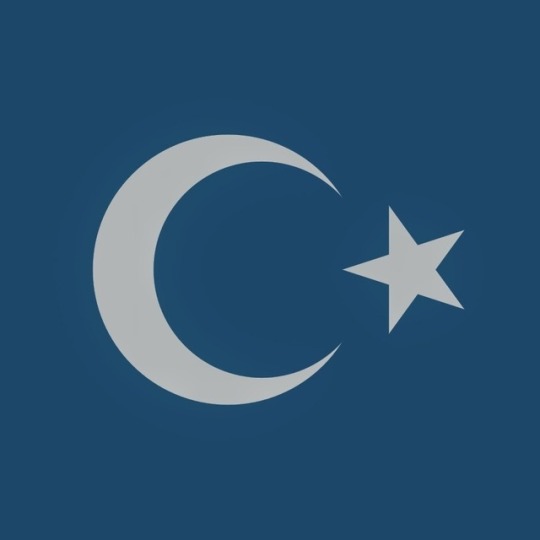

Son çare duaya kalmış anavatanım,
Sen neye yararsın, sen neye yaşarsın ey Türk!
241 notes
·
View notes